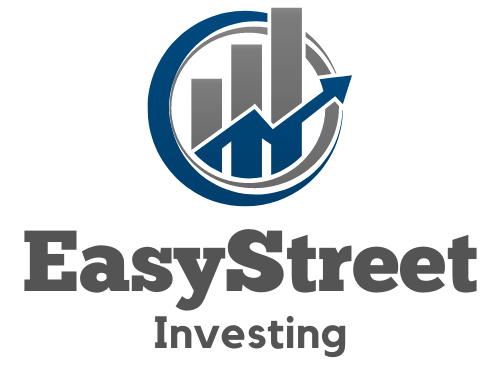Peer-to-peer lending is transforming the way individuals invest their money, offering an alternative to traditional banking by connecting investors directly with borrowers. If you’re eyeing this modern investment avenue, understanding its return potential is crucial. This article dives into the nuts and bolts of P2P investments, promising clear insights on how they might bolster your portfolio. We’ll sift through risks, rewards, and strategies to maximize gains without getting bogged down in jargon.
Ever wondered if you could earn more on your savings outside the confines of a bank account? Look no further. Peer-to-peer lending platforms are shaking things up, letting you lend cash to folks or businesses for potentially higher returns. But it’s not a free-for-all; savvy investors need to assess the lay of the land. Stick around as we unpack the essentials of evaluating P2P lending’s profitability, equipping you with knowledge that could fatten your wallet. No fluff, just the straight-up lowdown on making your money work harder for you.
Important Highlights
1. Peer-to-peer (P2P) lending presents an alternative investment avenue that involves providing loans to individuals or businesses through online platforms, bypassing traditional financial institutions. As a direct form of debt financing, investors in P2P lending can potentially earn higher returns compared to conventional savings and fixed-income investments due to the increased risk associated with unsecured loans. One of the notable peertopeer lending benefits is the ability for investors to diversify their portfolios by spreading their investments across multiple loans with varying risk levels. Additionally, P2P lending platforms often provide transparency regarding borrower profiles and loan performance, enabling investors to make informed decisions. This accessibility and potential for higher returns make P2P lending an appealing option for those looking to enhance their investment strategy.
2. The assessment of risk versus return is crucial when considering P2P lending investments. Investors should meticulously evaluate borrower profiles, including credit scores, employment history, and loan purposes. Diversification across various loans is also a recommended strategy to mitigate risks, as it reduces exposure to any single borrower’s potential default.
3. Returns from P2P lending are influenced by interest rates, which are often higher than those offered by banks, reflecting the greater risk taken on by lenders. However, these rates can fluctuate based on economic conditions and competition within the P2P market. Hence, staying informed about market trends and adjusting strategies accordingly is vital for maintaining favorable return potentials.
4. Utilizing advanced analytics and credit scoring models can significantly enhance the selection process of loan opportunities within P2P platforms. Sophisticated investors leverage these tools to identify borrowers who exhibit a lower likelihood of defaulting, thereby optimizing their investment portfolios for better performance outcomes.
5. Regulatory considerations play a significant role in the stability and growth of the P2P lending sector. Investors should be aware of the regulations governing these platforms in their respective jurisdictions, as they can impact both the security of their investments and the legal framework under which they operate. Changes in regulation can have immediate effects on platform practices and investor returns, necessitating regular monitoring for compliance and strategic adaptation.
Evaluating P2P Lending Platforms
When investors assess the return potential of peer-to-peer (P2P) lending, it’s essential to evaluate the platform itself. Consider factors such as the platform’s default rate, credit screening processes, and its track record. Platforms with stringent borrower vetting and a history of lower default rates can potentially offer more stable returns. Researching individual platforms and reading reviews can provide invaluable insight into their performance.
Understanding Risk vs. Reward in P2P Investments
Risk assessment is pivotal in judging the return potential on P2P lending investments. Higher interest rates on loans typically correlate with higher risk levels. Investors need to balance the allure of high returns against the possibility of borrower defaults. Diversifying investments across various loans and risk categories can mitigate potential financial setbacks while capitalizing on different interest rates.
Analyzing Historical Performance Data
Past performance data is a treasure trove for investors looking to gauge future returns in P2P lending. Scrutinize historical returns, considering market conditions during those periods. While past results are not indicative of future performance, they can offer a framework for what might be expected under similar circumstances.
Loan Diversification Strategies
Diversifying one’s loan portfolio is a critical strategy in P2P investments. Spread your funds across numerous loans to prevent a single default from significantly impacting overall returns. Such diversification also allows investors to sample different interest rates and borrower profiles, enhancing the robustness of their investment portfolio.
Fees Impacting Net Returns
In calculating net returns, always factor in fees charged by the P2P platform. These can include loan servicing fees or charges for late payments collected from borrowers, which may affect investor profits. Transparency about fee structures is important when selecting a P2P lending platform; this information is often available directly on their website.
The Role of Loan Terms in Return Potential
The length of a loan term influences return potential significantly. Short-term loans may offer quicker turnarounds but possibly at lower interest rates compared to long-term loans, which might carry higher interest rates due to increased uncertainty over time. Choose loan terms that align with your investment goals and risk tolerance.
Influence of Economic Cycles on P2P Returns
Economic conditions play a crucial role in affecting the default risk associated with P2P lending investments. During economic downturns, defaults may increase, thus affecting potential returns negatively. Conversely, healthy economic periods might see lower default rates leading to better returns for investors who have gauged the economic cycles adeptly.
Interest Rates’ Impact on Borrower Default Rates
A key variable influencing return potential is the prevailing interest rate environment. High-interest rates could lead to increased borrower defaults; however, they also mean higher initial yields for lenders willing to accept that risk level. It’s vital for investors to balance these dynamics carefully.
Tax Implications on P2P Lending Returns
Taxes are an inevitable aspect that affects actual take-home returns from P2P investing. Interest earned through P2P lending is often taxed as income, thereby reducing net gains. Understanding local tax laws and considering them when assessing investment returns is necessary.
Leveraging Auto-Investment Tools for Optimal Allocation
To optimize investment allocations efficiently, many investors turn to auto-investment tools provided by P2P platforms. These tools automatically distribute funds based on predetermined criteria such as risk preferences or desired interest rates, helping maintain a well-balanced portfolio conducive to achieving targeted returns.
Utilizing Secondary Markets for Liquidity
Potential exits before loan maturity can enhance return potential through secondary markets offered by some P2P platforms. While selling loans before they mature might incur discounts leading to reduced earnings, it provides liquidity which can be instrumental in managing cash flow or reinvesting into opportunities with potentially higher yields.
What Are Some Tips for Maximizing Returns in Peer-to-Peer Lending?
- Analyze the creditworthiness of borrowers thoroughly before investing.
- Diversify your loan portfolio across varying risk categories and maturities.
- Maintain awareness of economic trends that could influence borrower defaults.
- Include understanding fees and taxes in your overall return calculations.
- Consider using auto-investment tools for efficient fund allocation tailored to your preferences.
- Monitor your investments actively and adjust strategies as needed based on market conditions and personal financial goals.
- If possible, utilize secondary markets wisely for rebalancing your portfolio or managing liquidity needs without undermining overall profit objectives.
Frequently Asked Questions
How does peer-to-peer lending work?
Peer-to-peer (P2P) lending connects folks who need to borrow money with those who have cash to invest. You can lend your money to individuals or businesses through online platforms, and in return, you get interest payments along with the repayment of the principal amount over time.
What kind of returns can I expect from P2P investments?
Returns vary widely, but typically, you might see anything from 3% to 8% annually, depending on the risk level and the platform’s performance. Remember, higher potential returns often come with increased risk.
Is my money safe with P2P lending?
No investment is without risk. P2P lending is not covered by government insurance like FDIC in the USA, so there’s a chance of losing your capital if borrowers default. Always research platform safeguards and diversify your investment to mitigate risks.
Can I access my money quickly if I need to?
Some P2P platforms offer secondary markets where you can sell your loans to other investors, but this is not guaranteed. Your money may be tied up until the loan matures, which could be several years.
Are there any fees associated with P2P investing?
Yes, most platforms charge fees for their services. These can include origination fees paid by borrowers and servicing fees deducted from investors’ returns. Always check the fee structure before investing.
How do I choose the right P2P platform?
Consider factors like track record, default rates, user reviews, transparency, and regulatory compliance. Go for platforms that align well with your risk tolerance and investment goals.
Does diversification matter in P2P lending?
Absolutely! Spreading your investment across various loans and risk categories can help reduce your overall risk and protect your portfolio from defaults.
How are returns from P2P lending taxed?
Tax treatment varies by country. Generally, interest earned is considered taxable income. It’s important to understand your local tax obligations or consult a tax professional.
What should I look for in borrower profiles?
Evaluate credit scores, borrowing history, loan purpose, and risk grade assigned by the platform. Higher-quality borrower profiles generally indicate a lower risk of default.
How does economic downturn affect P2P lending?
Downturns can increase default rates as borrowers struggle financially. However, well-diversified portfolios might still yield positive returns even during tough economic times thanks to the spread of risk among various borrowers and industries.
Closing Insights on P2P Lending Returns
In conclusion, assessing the potential returns of peer-to-peer lending requires careful consideration of risks and rewards. By understanding how these platforms operate and what factors influence borrower reliability, investors can make informed decisions that align with their financial objectives. While uncertainties exist in any investment venture, thorough research and strategic diversification remain key components in maximizing gain while controlling exposure to potential losses within the dynamic world of P2P finance.
Risks aside, the allure of relatively high yields in a low-interest-rate environment makes P2P lending an intriguing option for many investors seeking to enhance their portfolio diversity. With diligent assessment practices and an eye for detail when selecting opportunities within this evolving marketplace, savvy investors could potentially reap substantial benefits over traditional fixed-income investments.

